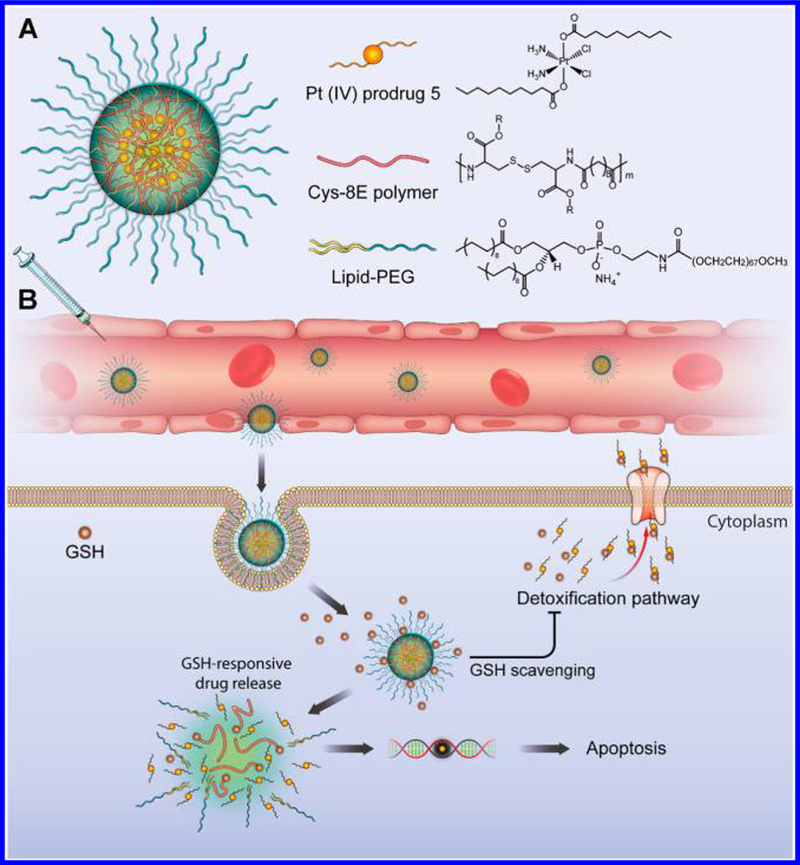Figure 1.

(A) Illustration of the redox-responsive nanoplatform, composed of Pt(IV) prodrug 5, Cys-8E polymer, and lipid-PEG, for the in vivo Pt delivery and treatment of cisplatin-resistant tumors. (B) CP5 NPs coated with lipid-PEG were designed to achieve long blood circulation, leading to high tumor accumulation via the enhanced permeability and retention (EPR) effect. Following cellular uptake, high levels of GSH in the cytosol promoted the rapid disintegration of CP5 NPs and release of Pt(IV) prodrugs. The Cys-8E polymer-mediated GSH-scavenging process was expected to minimize the GSH-induced detoxification pathway, decreasing the likelihood of released Pt drugs being deactivated and enabling them to diffuse into nuclei, where they would bind covalently with purine bases of DNA and ultimately trigger apoptosis.
